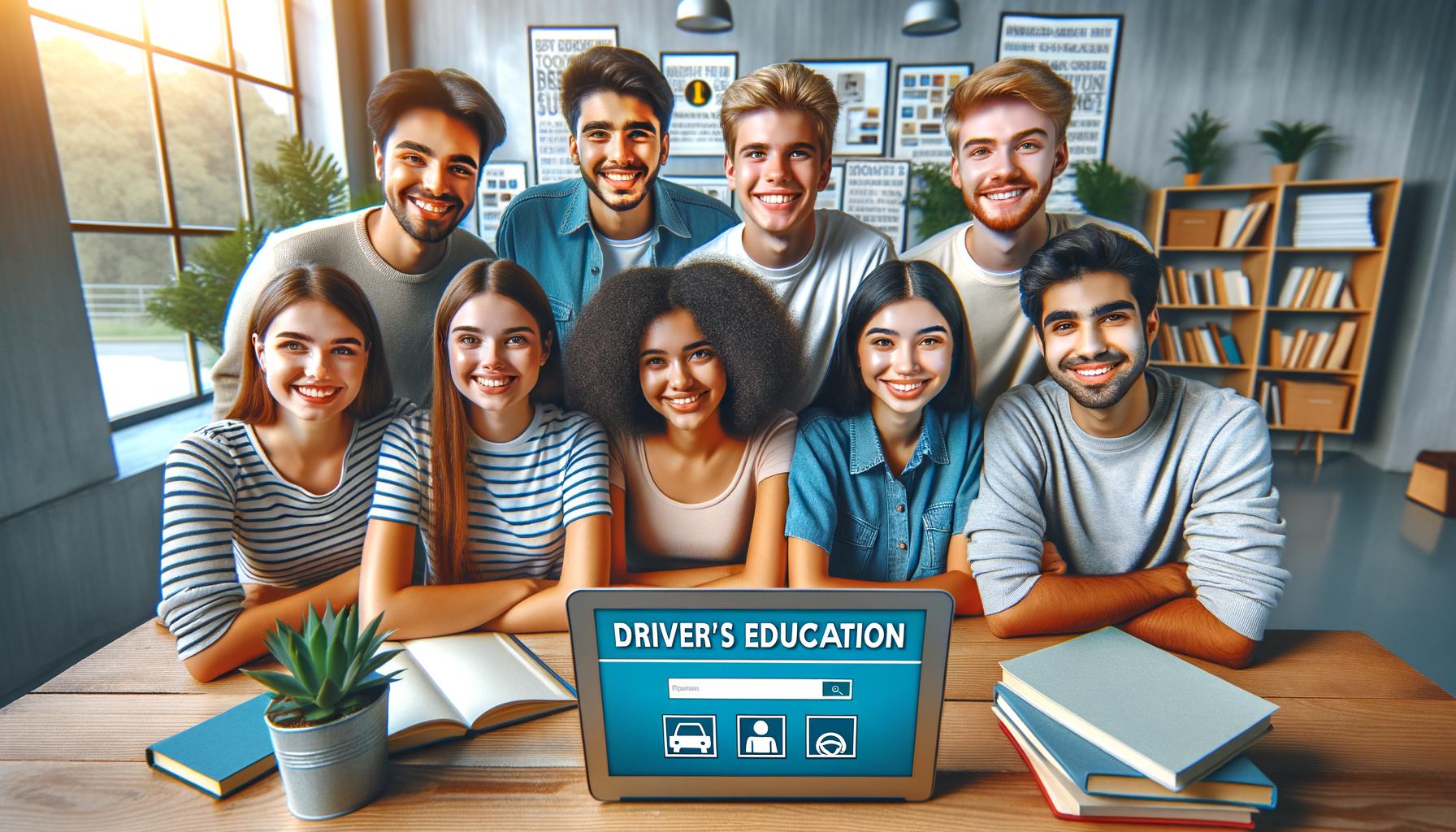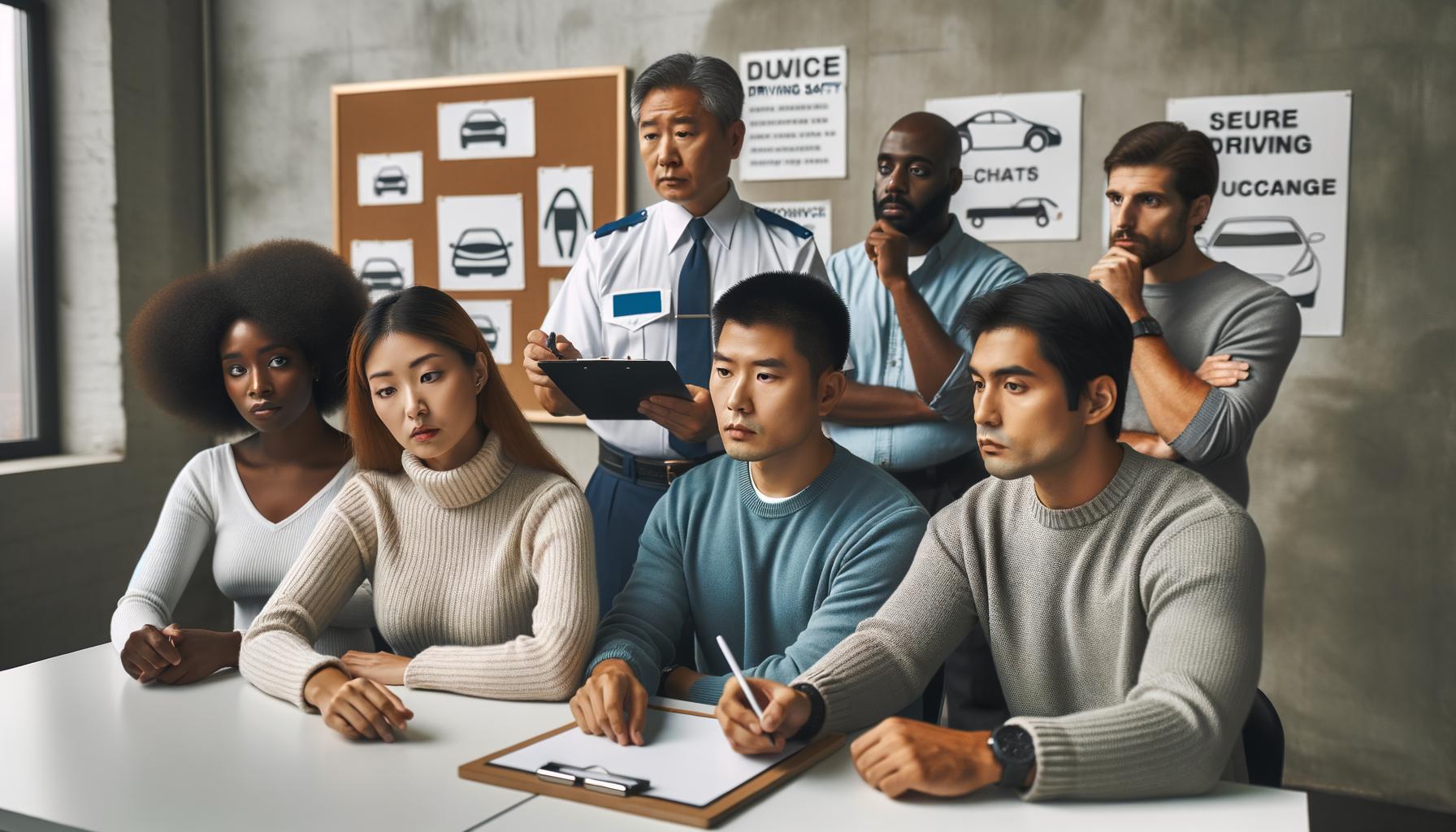Easy Online Defensive Driving Courses: What to Expect
At The Wiser Driver Driving School, we understand the importance of safe driving in today’s fast-paced world. That’s why we’re excited to introduce you to easy defensive driving online courses.
These convenient programs offer a flexible way to enhance your driving skills and potentially reduce insurance premiums. In this post, we’ll explore what you can expect from these courses and how they can benefit you on the road.
What Are Online Defensive Driving Courses?
The Core of Defensive Driving
Online defensive driving courses are digital learning programs that enhance driving skills and promote safer road practices. Defensive driving focuses on anticipating potential hazards and making safe decisions to avoid accidents. It’s not just about following traffic rules; it’s about developing a mindset that prioritizes safety for yourself and others on the road. These courses teach drivers how to be proactive rather than reactive, which forms the essence of defensive driving.
Advantages of Online Learning
The convenience of online learning has transformed driver education. You can now access high-quality defensive driving instruction from your home, at any time that suits your schedule. This flexibility benefits busy adults or those who live far from traditional driving schools.

Online courses often cost less than in-person classes. If you complete a defensive driving course, your car insurance provider may reward you with a discount, typically between 5 and 20 percent off your premium.
Course Structure and Duration
Online defensive driving courses typically range from 4 to 8 hours, depending on state requirements. The beauty of online learning lies in its flexibility – you can break this time into smaller, manageable chunks. You’re not confined to a rigid classroom schedule.
These courses are structured into modules, each focusing on specific aspects of defensive driving. You’ll find interactive elements like:
-
Videos
-
Quizzes
-
Simulations
These elements make learning engaging and effective. For instance, real-life traffic scenarios help you practice decision-making skills in a safe, virtual environment.
Interactive Learning Experience
The goal isn’t just to complete the course quickly, but to absorb and apply the knowledge to become a safer driver. Take your time and engage with the material. You’ll see the benefits on the road.
Many online defensive driving courses (including those offered by The Wiser Driver Driving School) use modern technology to create an immersive learning experience. This might include:
-
Full-screen video presentations
-
Narrated content
-
Closed captioning for accessibility
-
Interactive exercises to test your knowledge
Some courses even incorporate unique elements like drone video footage and animations to make the learning experience more dynamic and engaging.
As we move forward, let’s explore the key topics covered in these online defensive driving courses and how they contribute to making you a safer, more confident driver.
What Do Online Defensive Driving Courses Cover?
Online defensive driving courses offer a comprehensive curriculum designed to enhance your driving skills and promote road safety. These courses focus on delivering practical, actionable content that you can apply immediately to your daily driving.
Traffic Laws and Safe Driving Techniques
A solid understanding of traffic laws forms the foundation of safe driving. These courses cover the latest regulations, ensuring you’re up-to-date with current laws. They don’t just recite rules; they explain the reasoning behind them, helping you internalize safe driving practices.

For instance, did you know that rear-end crashes make up roughly one-third of all accidents? Many courses teach the “three-second rule” for maintaining a safe following distance, a simple yet effective technique to significantly reduce your risk of rear-end collisions.
Recognizing and Responding to Road Hazards
Hazard recognition is a critical skill that can prevent accidents before they happen. Online courses often use real-world scenarios and interactive simulations to sharpen your ability to spot potential dangers on the road.
You’ll learn to scan your environment continuously, looking at least 12-15 seconds ahead of your vehicle. This practice allows you to anticipate and react to hazards well in advance. For example, if you spot a ball rolling into the street, you’ll learn to anticipate a child may follow, allowing you to slow down preemptively.
Navigating Aggressive Driving Situations
Road rage and aggressive driving are increasingly common problems. The National Highway Traffic Safety Administration reports that speeding was a contributing factor in 29% of all traffic fatalities in 2022. Most courses equip you with strategies to de-escalate tense situations and avoid confrontations on the road.
You’ll learn techniques like avoiding eye contact with aggressive drivers, maintaining a safe distance, and knowing when to exit the highway or change routes if necessary. These practical skills can help you stay calm and safe in challenging driving situations.
Understanding Impaired Driving
The effects of drugs and alcohol on driving are severe and often underestimated. Quality courses provide eye-opening statistics and real-life examples to illustrate the dangers of impaired driving. Did you know that even a blood alcohol concentration (BAC) of .02% (well below the legal limit) can affect your ability to track moving objects and perform two tasks at once?
These courses go beyond just telling you not to drink and drive. They offer practical alternatives and strategies to avoid impaired driving, such as designating a sober driver, using ride-sharing services, or planning overnight stays when attending events where alcohol is served.
Interactive Learning Experience
Many online defensive driving courses (including those offered by The Wiser Driver Driving School) use modern technology to create an immersive learning experience. This might include full-screen video presentations, narrated content, closed captioning for accessibility, and interactive exercises to test your knowledge.
Some courses even incorporate unique elements like drone video footage and animations to make the learning experience more dynamic and engaging. These interactive elements help reinforce the important concepts covered in the course material.
Now that we’ve explored the key topics covered in online defensive driving courses, let’s take a closer look at how these courses typically operate and what you can expect from the learning process.
How Online Defensive Driving Courses Operate
Enrollment Process
Online defensive driving courses offer a streamlined experience from start to finish. The registration process is straightforward. You’ll need to provide basic information such as your name, address, driver’s license number, and the reason for taking the course (insurance discount, ticket dismissal, etc.). Some states require additional details, so prepare to answer a few extra questions if necessary.

After registration, you’ll receive immediate access to the course materials. This instant access gives online courses a significant advantage over traditional classroom settings.
Course Content Navigation
The course content typically divides into modules, each focusing on specific aspects of defensive driving. These modules often include a mix of text, videos, and interactive elements to maintain engagement. You might watch a video demonstrating proper merging techniques, then answer questions to test your understanding.
Many courses allow you to save your progress and return later (perfect for fitting learning around a busy schedule). However, some states have time requirements for course completion, so check if there’s a minimum amount of time you need to spend on each module.
Knowledge Assessment
Throughout the course, you’ll encounter quizzes to reinforce key concepts. These quizzes ensure you absorb the material. If you don’t pass a quiz, don’t worry. Most courses allow you to review the material and retake the quiz until you master the content.
At the end of the course, you’ll typically face a final exam. The format can vary, but it’s usually a multiple-choice test covering all the major topics from the course. In most cases, you’ll need to score at least 80% to pass. If you don’t pass on your first attempt, many courses offer free retakes.
Course Completion
Once you pass the final exam, you’ll receive a certificate of completion. This certificate serves as proof that you’ve successfully finished the course. Many online providers will email this certificate to you immediately.
If you’re taking the course for insurance purposes, the provider can often submit your completion directly to your insurance company. For ticket dismissal, you might need to present the certificate to the court yourself. Always check with your local authorities to understand exactly what’s required in your situation.
Technology and Interactivity
Many online defensive driving courses use modern technology to create an immersive learning experience. This might include full-screen video presentations, narrated content, closed captioning for accessibility, and interactive exercises to test your knowledge.
Some courses even incorporate unique elements like drone video footage and animations to make the learning experience more dynamic and engaging. These interactive elements help reinforce the important concepts covered in the course material.
Final Thoughts
Online defensive driving courses offer a convenient way to enhance your driving skills and promote road safety. These easy defensive driving online programs provide flexibility, allowing you to learn at your own pace from home. You’ll cover essential topics like traffic laws, hazard recognition, and dealing with aggressive drivers, equipping you with the knowledge to navigate today’s roads safely.

Completing an online defensive driving course can lead to insurance discounts, potential point reduction on your license, and even dismissal of certain traffic tickets. The interactive nature of these courses (with engaging videos, quizzes, and simulations) makes learning both enjoyable and effective. Regular participation in defensive driving courses helps you stay current with best practices and reinforces good driving habits.
We at The Wiser Driver Driving School provide comprehensive driving education programs for drivers of all ages and skill levels. Our state-approved courses include defensive driving, Joshua’s Law classes, and personalized driving lessons. We offer the convenience of online learning combined with hands-on instruction from experienced professionals. Take the next step in your driving education by enrolling in an online defensive driving course today.
















































